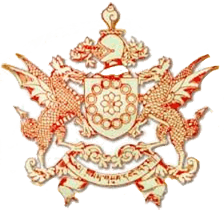Kingdom of Sikkim
| Kingdom of Sikkim | ||||||
| Protectorate of British Empire (1861–1950) and India (1950–1975) | ||||||
| ||||||
| ||||||
 | ||||||
| Capital | Yuksom | |||||
| Languages | Nepali language, Sikkimese language | |||||
| Religion | Buddhism | |||||
| Government | Monarchy | |||||
| History | ||||||
| - | Established | 1642 | ||||
| - | Phuntsog Namgyal Ascended the throne | 1642 | ||||
| - | Palden Thondup Namgyal Forced to abdicate | 1975 | ||||
| - | Disestablished | May 16, 1975 | ||||
Sikkim was an independent kingdom from 1642 to May 16, 1975 in the Himalayas . It was ruled by a hereditary Chogyal (Kings). In the 19th century it became a British protectorate, then an Indian protectorate in 1950. Sikkim was formally annexed by India in 1975 and it became one of the states of India. In culture and religion, it has been linked closely with Tibet, from which its first king migrated, and Bhutan, with which it shares borders
List of Chogyals of Sikkim (1642–1975)

Royal Flag of Sikkim (1877–1975)
.svg.png)
Flag of Sikkim (1877–1914; 1962–1967)
.svg.png)
Flag of Sikkim (1914–1962)
.svg.png)
Flag of Sikkim (1967–1975)
| # | Reign | Portrait | Ruler | Events during reign |
|---|---|---|---|---|
| 1 | 1642–1670 |  |
Phuntsog Namgyal | Ascended the throne and was consecrated as the first Chogyal of Sikkim. Made the capital in Yuksom. |
| 2 | 1670–1700 |  |
Tensung Namgyal | Shifted capital to Rabdentse from Yuksom. |
| 3 | 1700–1717 |  |
Chakdor Namgyal | His half-sister Pendiongmu tried to dethrone Chakdor, who fled to Lhasa, but was reinstated as king with the help of Tibetans. |
| 4 | 1717–1733 |  |
Gyurmed Namgyal | Sikkim was attacked by Nepalese. |
| 5 | 1733–1780 |  |
Phuntsog Namgyal II | Nepalese raided Rabdentse, the then capital of Sikkim. |
| 6 | 1780–1793 |  |
Tenzing Namgyal | Chogyal fled to Tibet, and later died there in exile. |
| 7 | 1793–1863 |  |
Tshudpud Namgyal | The longest-reigning Chogyal of Sikkim. Shifted the capital from Rabdentse to Tumlong. Treaty of Titalia in 1817 between Sikkim and British India was signed in which territories lost to Nepal were appropriated to Sikkim. Darjeeling was gifted to British India in 1835. Two Britons, Dr. Arthur Campbell and Dr. Joseph Dalton Hooker were captured by the Sikkimese in 1849. Hostilities between British India and Sikkim continued and led to a treaty signed, in which Darjeeling was ceded to British India. |
| 8 | 1863–1874 |  |
Sidkeong Namgyal | |
| 9 | 1874–1914 |  |
Thutob Namgyal | Claude White appointed as the first political officer of Sikkim in 1889. Capital shifted from Tumlong to Gangtok in 1894. |
| 10 | 1914 |  |
Sidkeong Tulku Namgyal | The shortest-reigning Chogyal of Sikkim, ruled from 10 February to 5 December 1914. Died of heart failure, aged 35, in most suspicious circumstances. |
| 11 | 1914–1963 |  |
Tashi Namgyal | Treaty between India and Sikkim was signed in 1950, giving India suzerainty over Sikkim. |
| 12 | 1963–1975 |  |
Palden Thondup Namgyal | The 12th Chogyal, Indian sovereignty post plebiscite. |
The son from the first marriage of Palden Thondup Namgyal, Wangchuk Namgyal, was named the 13th Chogyal after his father's death on 29 January 1982, but the position no longer confers any official authority.
